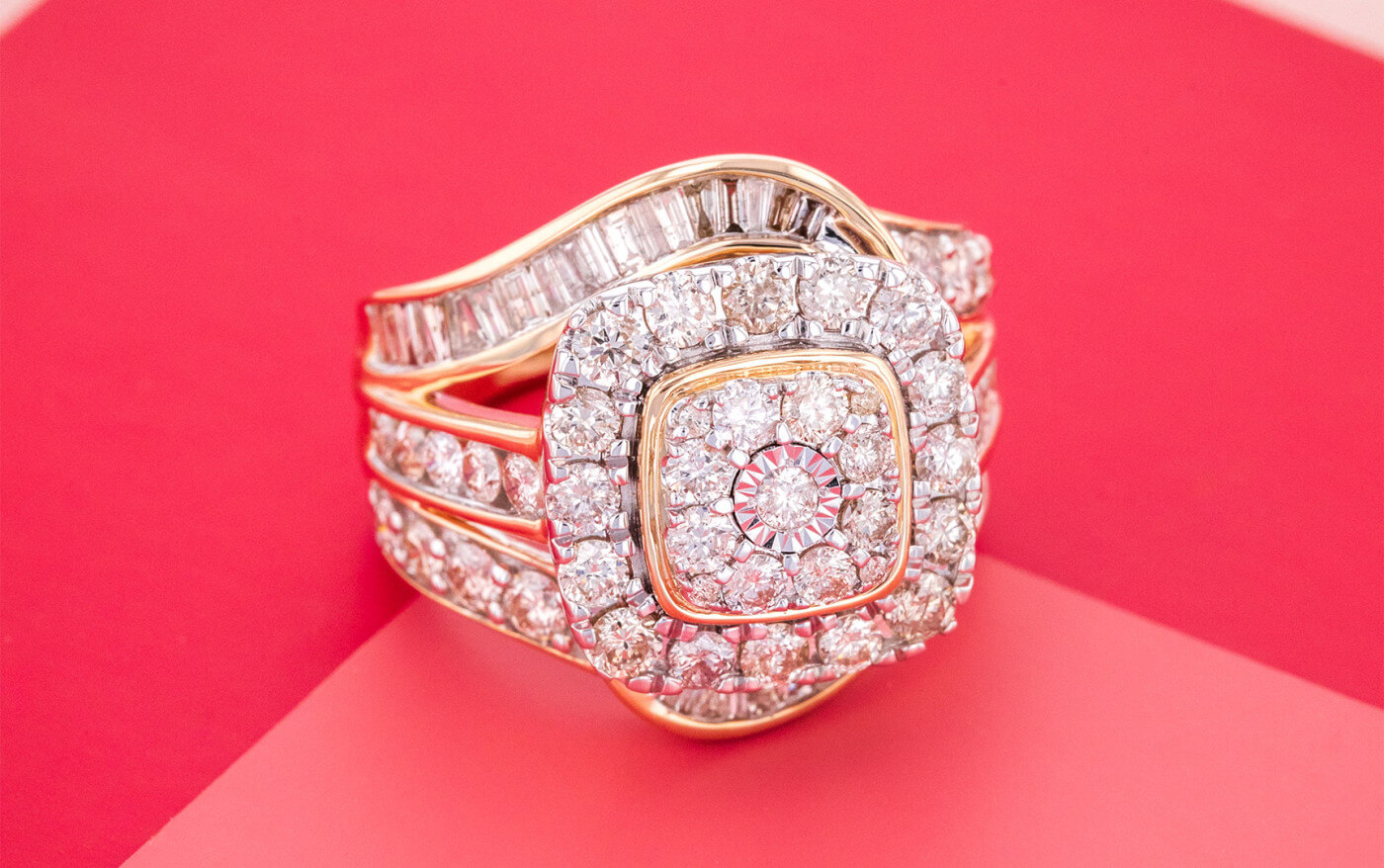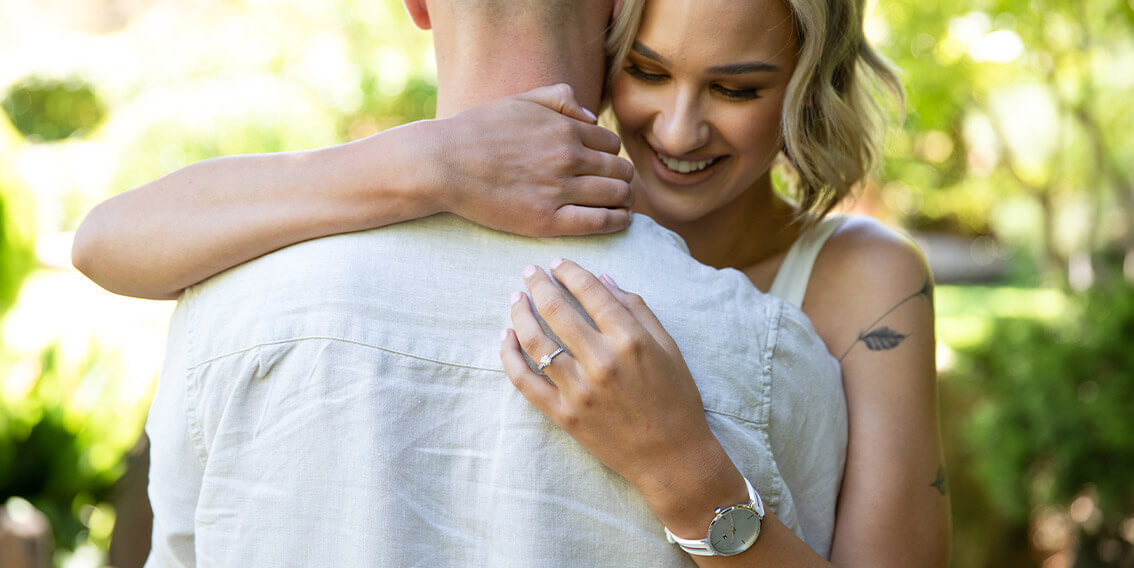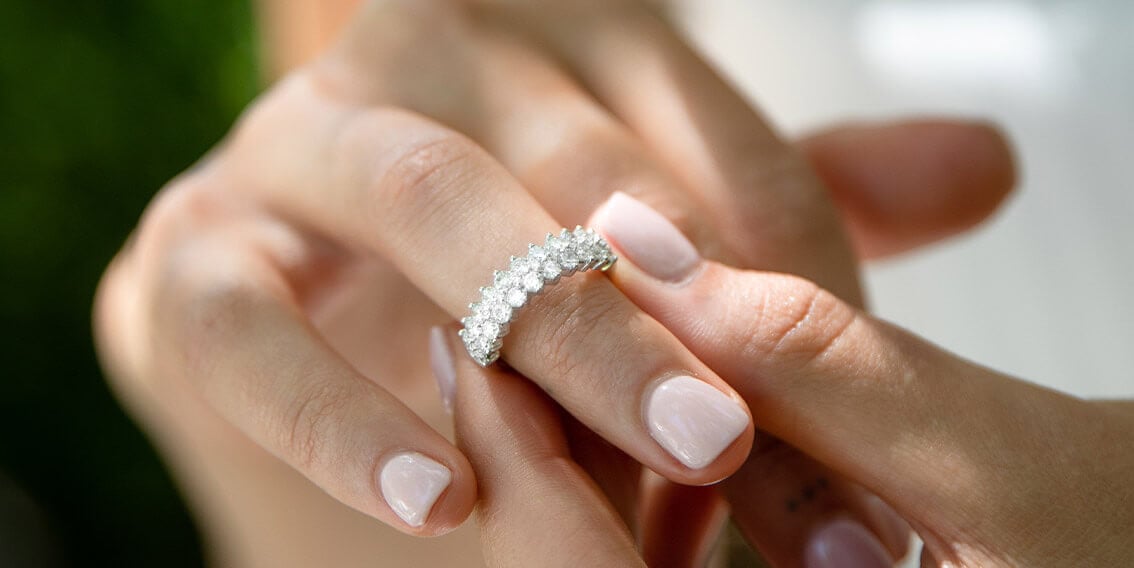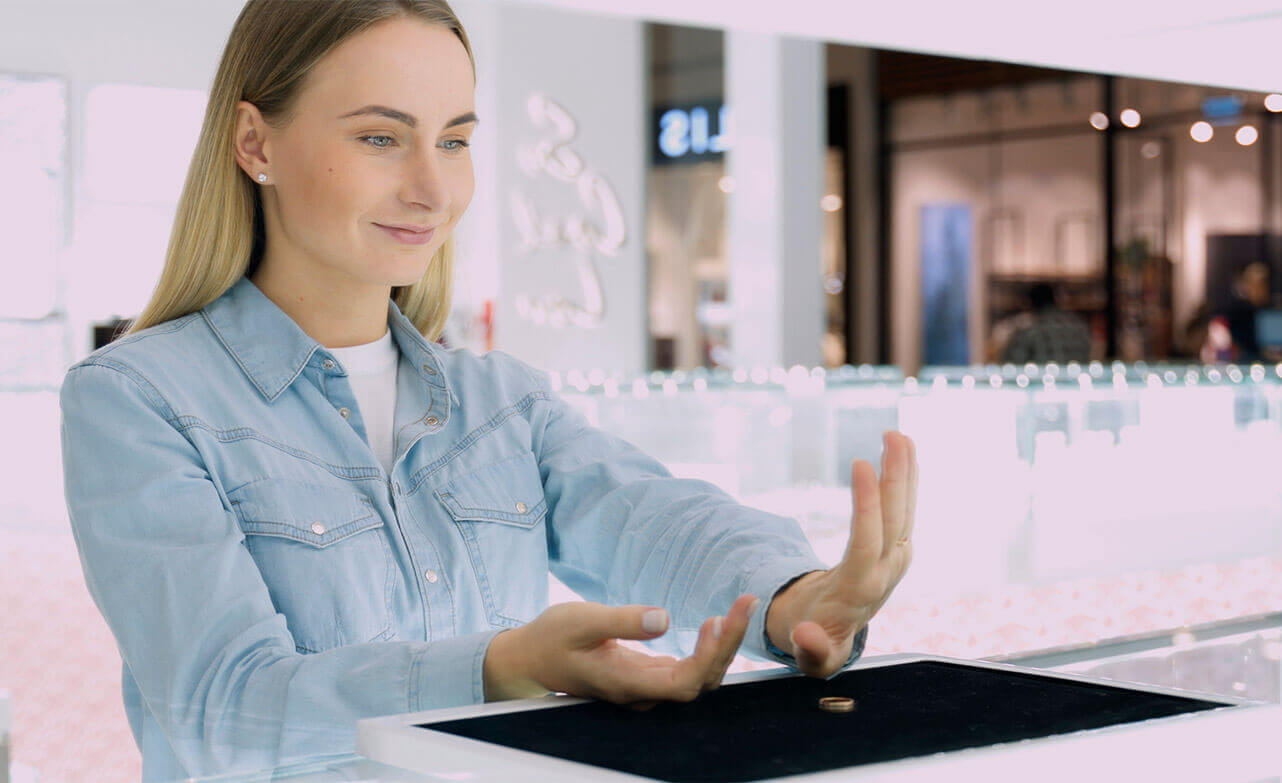What to know about diamonds before buying a ring? Great question! Buying a diamond ring is a huge investment. Not only do they signify you and your partner taking the next big step in your relationship, a milestone birthday or even a major anniversary, but they can also be quite costly. So you want to make sure you're making the right decision before taking the plunge. This is a decision that not only keeps you and your partner happy but your wallet too.
Read on to figure out what to know about diamonds before buying a ring.
What To Know About Diamonds Before Buying A Ring Overview:
The Ring Size
Before browsing any glass jewellery cabinets in search of the perfect diamond ring, you're going to need to determine you or your partner's ring size. Figuring out your ring size is easy, all you have to do is find yourself a tape measure or get yourself a ring multisizer. This ingenious little contraption works like a belt, simply slip it onto you or your partner's finger, adjust it until it reaches a comfortable fit and then take note of the size indicated by the arrow. You will then know your or your partner's ring size.
The 4C's
When you decide to purchase a diamond ring, you're first going to need to know the basics. Start by learning the 4C's; cut, colour, carat and clarity. This will not only help determine the value of certain rings, but it will also help you figure out the kinds of diamonds that are in your price range as well as the condition of a particular piece of diamond jewellery.
Cut
The cut of a diamond refers to the shape a diamond is polished into, rather than its actual shape to start. The cut of a diamond will determine its symmetry and ability to shine, ultimately affecting its value as some diamond cuts shine better than others.
Colour
A huge factor in determining a diamond's value, stones that are clear or vibrantly coloured tend to be more valuable than those with only a small amount of colour. It is, however, very rare to come across a stone that doesn't have any colour-they just appear colourless to the naked eye. But if you look closely with a magnifying glass, you'll likely come across some tiny flecks of colour. Coloured diamonds will have a very distinct colour ranging from yellow, brown or green, blue or pink. Coloured diamonds are often called 'fancies'. Check out black diamonds and pink diamonds to experience something different.
Carat
Derived from an ancient measuring system that was used to measure the volume of seeds within a carob tree. Carat is used to measure a diamond's size and weight, which is a major factor in determining a diamond's value given they are priced on a per carat basis. 1 carat will generally be divided into 100 points, while anything under is referred to as 'pointers'.
Clarity
A diamond's clarity will refer to its natural imperfections or lack thereof. While practically invisible to the naked eye, most diamonds have tiny flecks and scratches that formed during the crystallization process. These imperfections are known as inclusions, and the less a diamond has the more valuable it will be. Find out more in our Diamond Guide.
The Style
Another element you will need to consider when buying a diamond ring is the style of ring you or your partner wants. From solitaires and cluster rings to antique and simple diamond band rings, there are so many styles to choose from. Those who have a more classic style tend to go for gold, antique or solitaire rings, while those who like a little more bling with their jewellery are more than likely to fall in love with diamond cluster rings or ones with a halo setting that features an array of smaller stones surrounding the centre stone.
Styles that are perfect for a minimalist include simple white gold diamond rings, rings with smaller diamonds, or even the glamorous yet understated diamond band. To figure out the style you want to go with, you should first consider the kind of pieces you already have in your jewellery collection and what you get the most wear out of. This step will help ensure that you pick a diamond engagement ring that you will wear and cherish forever. Find out more in our Engagement Ring Guide. If you don't know where to start out Diamond Style Guide can also help.
The Cut
Figuring out the perfect cut is another important factor in choosing your diamond ring. Not only does a diamond's cut affect how well it shines and reflects light, but it also helps highlight the wearer's style. Because while some may choose a particular diamond cut based on its ability to shine, a majority will make the decision based on what shape they generally prefer. Arguably, the most popular diamond cuts include the round cut, cushion cut, princess cut, emerald cut and marquise cut.
Round Cut
Round cut diamonds are highly sought as their shape maximises the light that the diamond is exposed to, giving off maximum sparkle. Round cut diamonds work well in solitaire and 3-stone settings.
Cushion-Cut
With a shape that is reminiscent of a pillow (hence its name), cushion cut diamonds have around 58 facets which increase the stone's brilliance and ability to shine. This cut is primarily seen in solitaire rings as well as more modern settings and styles including channel and halo set rings.
Princess-Cut
Featuring a square or rectangular shape, princess cut diamonds typically have around 57 facets which give off a ton of light. Typically, this diamond-cut will appear in a channel or prong solitaire setting.
Emerald-Cut
While the emerald cut may not sparkle as well as the round cut, their facets give off an appearance that is reminiscent of a hall of mirrors. These facets reflect off one another and give the stone a beautiful sparkle. Emerald cut diamonds work best with invisible and bar settings as well as three-stone style rings.
Marquise-Cut
Featuring a football-like shape, Marquis diamonds give off a brilliant sparkle thanks to their 58 facets and pointed edges. Marquis diamond rings are primarily seen with the classic claw setting as well as the flashy Pave setting.
The Setting
Choosing a setting is another important factor in picking out your perfect diamond ring. The setting is the piece of jewellery that your diamond sits in, it's like a little podium for your diamond that helps show it off. There are many different ring settings out there, all of which serve to complement the wearer's style. The most common diamond ring settings include the claw, bezel, chevron, pave and invisible set.
Claw
Rings with a claw setting normally feature 3 or more prongs that act almost like a basket that the diamond sits in. The most prominent setting for diamond rings, this feminine style is primarily used for diamond solitaire engagement rings.
Bezel
A bezel is a ring setting that the band of metal that is soldered onto the mounting to surround the diamond and hold it into place. The metal fully 'entraps' the ston
Chevron
A chevron setting is a v-shaped prong that holds in the point of a diamond, usually one that is a marquise or princess cut.
Pave
From the French word meaning 'to pave', jewellery featuring a pave setting generally has lots of mini diamond or cubic zirconia stones embedded close together to 'pave' the surface so that it shimmers.
Invisible
This more understated setting features stones that have been grooved in the ring and set close together. This design does not feature any visible prongs.
The Budget
Once you've figured out the kind of ring you're looking to purchase, you will then need to consider your budget. Choosing a budget is crucial to buying a diamond ring as you want to ensure you're spending within your means. If you are particular about the cut, carat, clarity and colour of your ring, you will likely end up spending a little bit more. If you aren't fussed on some of the finer details and just want something that looks good and is good quality, you can likely get away with spending around $1000-$2000 on your diamond ring.
There are, however, several smart money-saving tips that you can take on board to expand your diamond ring budget. These tips include avoiding buying your lunch and ordering takeout, consider downgrading to a cheaper phone plan and bringing a list grocery shopping to ensure that you don't fall into the trap of purchasing items you don't need. You can even download a phone app that helps you track your spending and provides you with savvy money-saving tips.
When it comes to diamond engagement rings, the general rule of thumb is that you use two months worth of your annual salary. While this is not some unwritten rule, it is usually a figure which people aim towards. In fact, a recent study found that the average couple spends around $3,700 USD ($4,750) on a diamond engagement ring. Check out our 'how to buy a diamond ring without getting duped' blog to find some helpful tips.
Eager to learn more? Check out our Diamond Price Guide or head into one of Grahams' five store locations where one of our expert sales associates will carefully guide you through the process of buying a diamond ring.




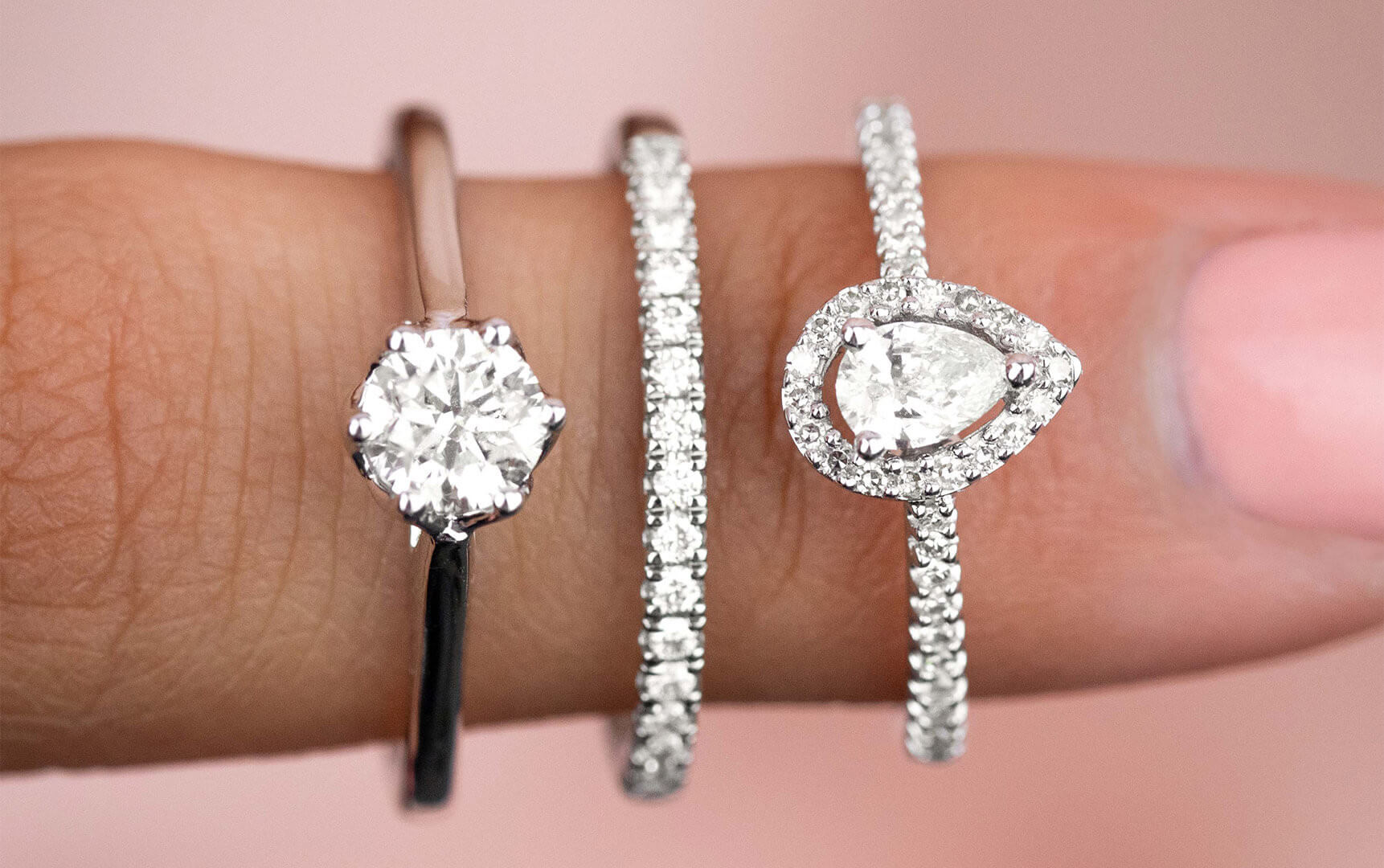
.png)








